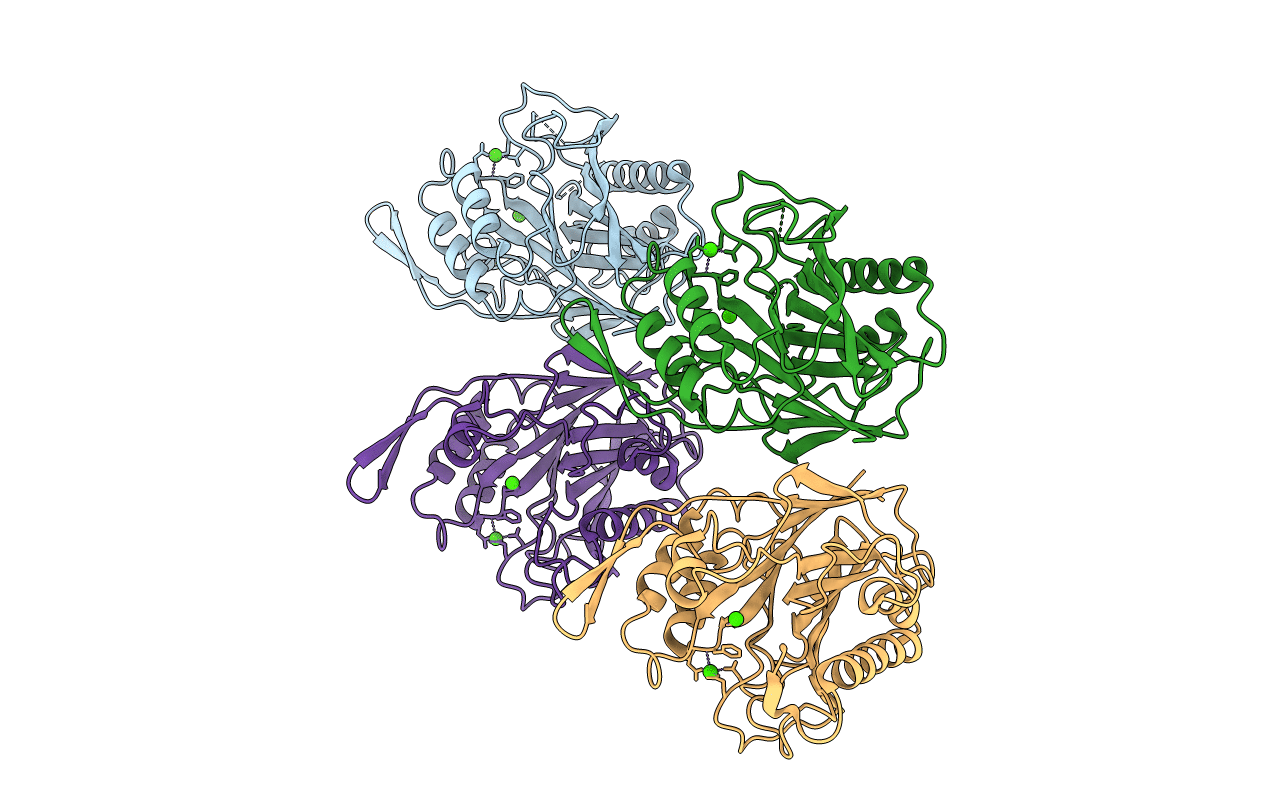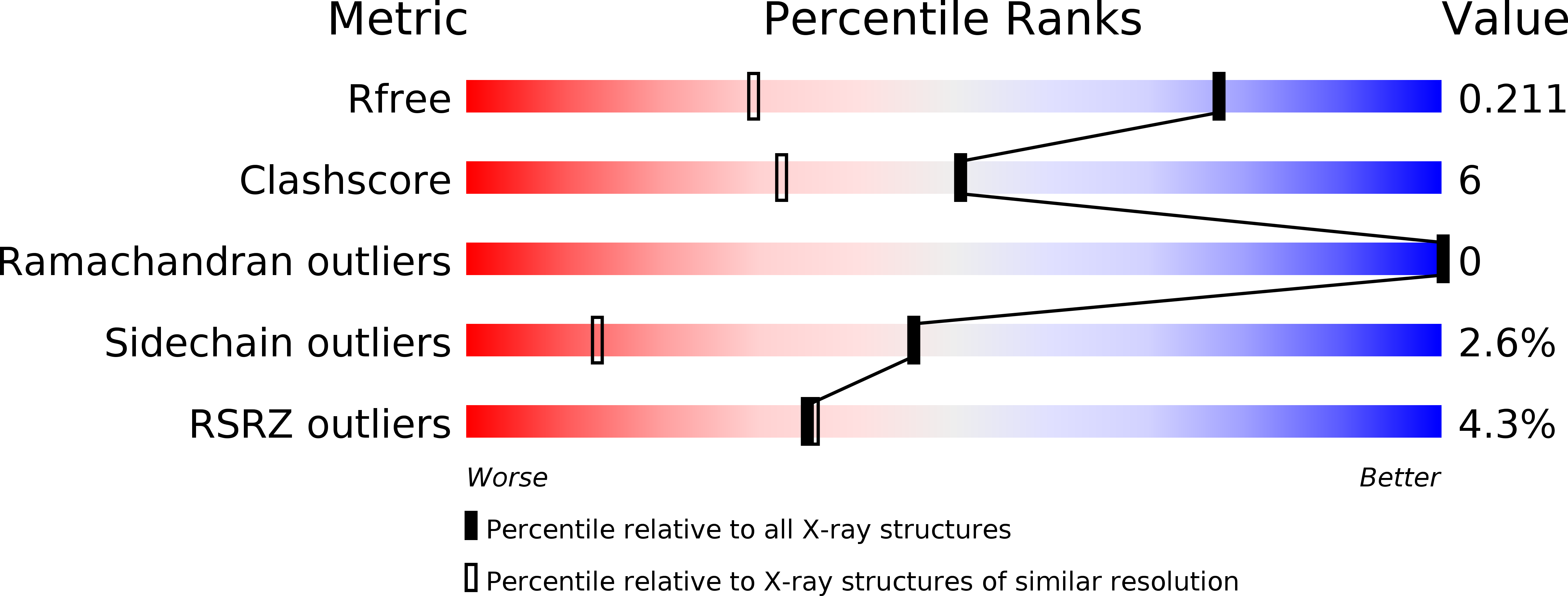
Deposition Date
2006-02-02
Release Date
2006-05-02
Last Version Date
2024-11-20
Entry Detail
PDB ID:
2DDR
Keywords:
Title:
Crystal structure of sphingomyelinase from Bacillus cereus with calcium ion
Biological Source:
Source Organism:
Bacillus cereus (Taxon ID: 1396)
Host Organism:
Method Details:
Experimental Method:
Resolution:
1.40 Å
R-Value Free:
0.23
R-Value Work:
0.21
R-Value Observed:
0.21
Space Group:
P 1


